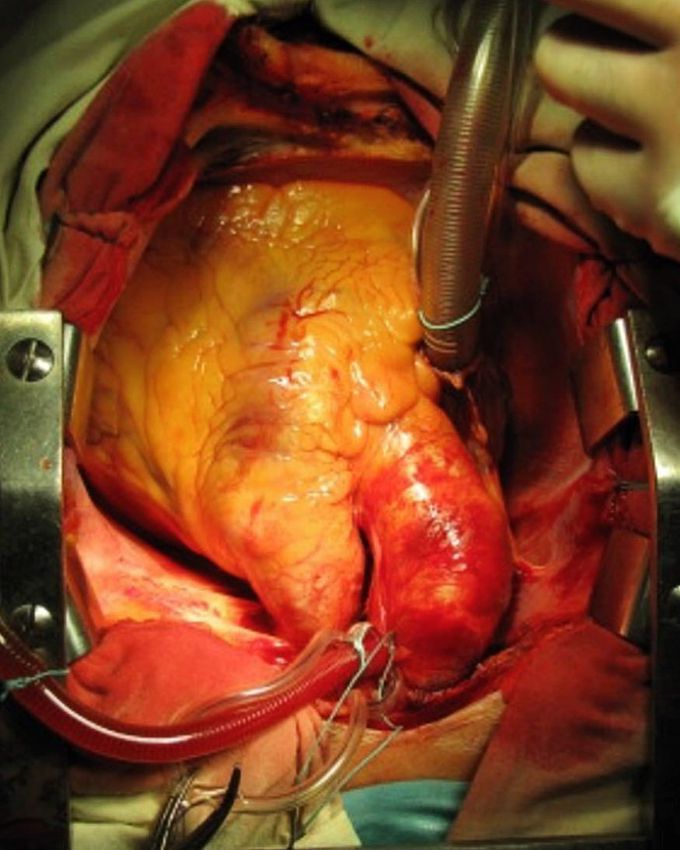


Ascending aortic aneurysm!!!
Notice that stretched and bulging section in the wall of the aorta. Aortic aneurysm is the enlargement (in width and/or in length) of a weakened area in the first portion that comes off the heart, the ascending aorta. It is caused by a degenerative processes in ascending aorta - cystic medial degeneration - that affect the medial layer by varying degrees of elastic fibre fragmentation and smooth muscle loss. This is a normal process of aging, which may accelerate the risk of developing an aneurysm. The aortic wall then loses its strength and elasticity, becoming aneurysmal. Generally speaking, an aneurysm in that location is fatal due to its liability to dissect or ruptureBecause the section with the aneurysm is overstretched and weak, it can burst and lead to severe bleeding. Aneurysm diameter is the main indication for surgical intervention, as it can lead to the aforementioned complications. Open surgery typically involves exposure of the dilated portion of the aorta and insertion of a synthetic graft (tube). Once the graft is sewn into the proximal and distal portions of the aorta, the aneurysmal sac is closed around the graft.

